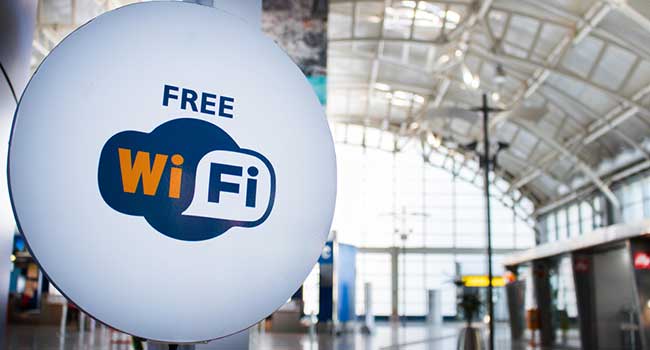How Public Wi-Fi Puts You at Risk—And What You Can Do About It
Public Wi-Fi is everywhere—cafés, airports, shopping malls, and even public transport. It’s super convenient, but have you ever stopped to think about the risks? Cybercriminals are lurking, waiting to pounce on unsecured networks and steal personal data. In South Africa where cybercrime is on the rise, using public Wi-Fi without proper security measures is a big mistake.
This article reveals the hidden dangers of public Wi-Fi, real-life cyber threats and expert-backed tips to stay safe online.
South African Cybercrime is Skyrocketing
Cybercrime in South Africa is at an all-time high with online fraud growing at an alarming rate. According to the South African Banking Risk Information Centre (SABRIC), digital banking fraud has grown by 45% and 60% of banking crimes now occur via banking apps. Even more worrying, fraud via banking apps has grown by 89% year-on-year. (Source)
Public Wi-Fi plays a big role in these crimes, it’s an easy entry point for hackers to intercept your data. Once you’re connected to an unsecured network, criminals can access your passwords, personal details and financial accounts in minutes.
How Hackers Target Public Wi-Fi
Cybercriminals have many ways to target unsuspecting users on public Wi-Fi. Here’s how they do it:
Man-in-the-Middle (MITM) Attacks
A MITM attack is when a hacker positions themselves between your device and the network, intercepting data as it goes back and forth. They can steal login credentials, banking details and even manipulate communications. Imagine typing in your banking password and it being captured in real-time by a cybercriminal.
Evil Twin Attacks
Hackers create fake Wi-Fi networks that look legitimate—like “Free Airport Wi-Fi”—and trick users into connecting. Once connected, attackers can monitor your online activity and steal personal data without you knowing.
Malware Injection
Hackers use unsecured public Wi-Fi to inject malware into connected devices. This malware can:
- Steal sensitive data.
- Lock you out of your device until you pay a ransom (ransomware).
- Turn your device into a bot for large-scale cyberattacks.
The Real Risks: What’s at Stake?If you connect to an unsecured Wi-Fi network you risk:
- Identity Theft: Hackers can steal your login details and personal info to impersonate you.
- Financial Loss: Unauthorised transactions can drain your bank account.
- Device Hijacking: Hackers can remotely access and control your device.

How to Stay Safe When Using Public Wi-Fi
1. Use a Virtual Private Network (VPN)
A VPN encrypts your internet traffic, no hacker can intercept your data. Check out these trusted VPN services:
- NordVPN (nordvpn.com)
- ExpressVPN (expressvpn.com)
- ProtonVPN (protonvpn.com)
2. Check if the Wi-Fi Network is Legitimate
- Confirm the Wi-Fi network name with staff.
- Don’t connect to networks that require no password.
3. Turn Off File Sharing & Auto-Connect
- Turn off file sharing on Windows and Mac in network settings.
- Disable automatic connection to open networks on Android and iOS.
4. Enable Two-Factor Authentication (2FA)
Even if a hacker steals your login credentials, 2FA will stop them from accessing your accounts without an extra security code. Enable 2FA on:
- Banking Apps
- Email Accounts
- Social Media Platforms
5. Avoid Online Banking & Sensitive Transactions
- Never enter banking details over public Wi-Fi.
- If you have to, use mobile data or a personal hotspot instead.
6. Only Use HTTPS Websites
Make sure every website you visit starts with “https://”, that’s encrypted data transfer. Never enter sensitive info on “http://” sites.
Tips for Businesses with Public Wi-Fi
If you run a business with public Wi-Fi, implement these:
- Encrypt Your Network: Use WPA3 encryption.
- Use a Captive Portal: Require users to log in before they can access the network.
- Educate Customers: Display security warnings about public Wi-Fi risks.
What to Do if You Think You’ve Been Hacked
If you think your data has been compromised on public Wi-Fi:
- Disconnect Immediately. Switch to a secure network.
- Change Your Passwords. Prioritize banking and email accounts.
- Run a Full Antivirus Scan. Detect and remove malware.
- Monitor Financial Transactions. Look for unauthorized activity.
- Report Cybercrime. Contact SABRIC or the South African Police Service Cybercrime Unit.
Conclusion
Public Wi-Fi is a modern convenience but it comes with serious risks. By understanding the threats and applying some simple measures—like using a VPN, avoiding sensitive transactions and 2FA—you can protect your personal data from cybercriminals. Stay safe, educate others and share this guide to spread the word!
FAQs
- Is public Wi-Fi safe if I use a VPN?
- Yes, it encrypts your connection.
- Can hackers see my passwords on public Wi-Fi?
- Yes, unless you use encryption like HTTPS or a VPN.
- How do I know if a public Wi-Fi network is fake?
- Don’t connect to networks with generic names like “Free Public Wi-Fi.” Always check with staff.
- What should I do if I entered sensitive info on public Wi-Fi?
- Change passwords and enable 2FA.
- How do I use public Wi-Fi safely?
- Use a VPN, avoid sensitive transactions and auto-connect.
 ... Luna is Loading ...
... Luna is Loading ...
